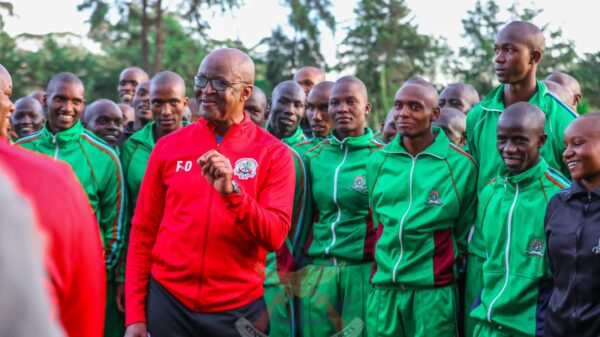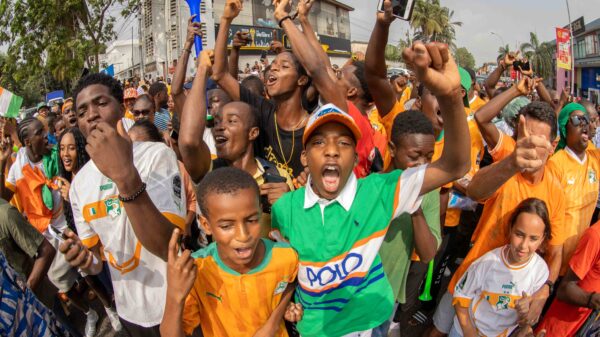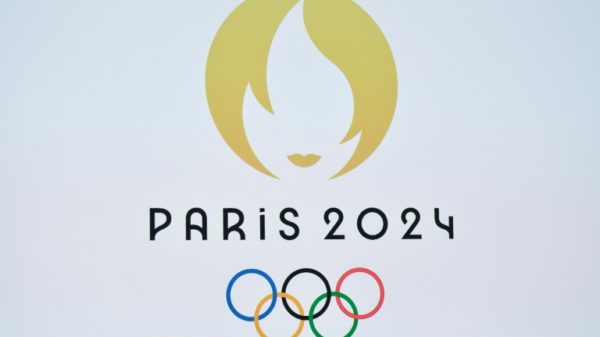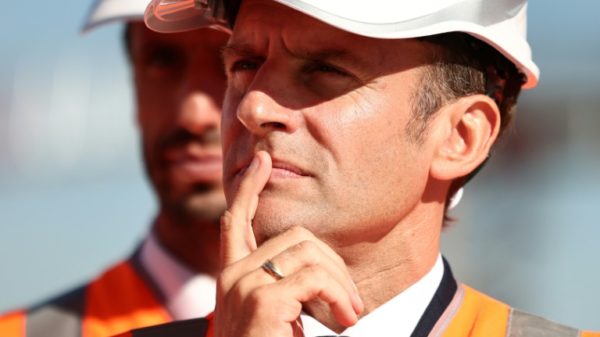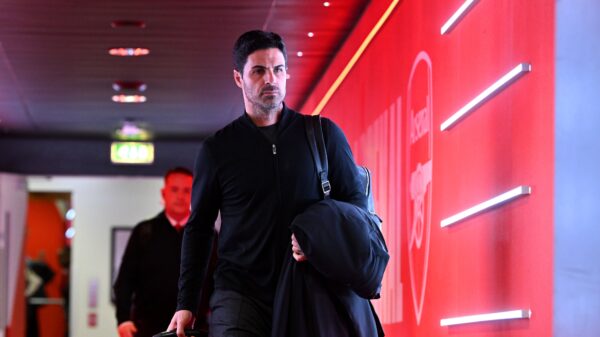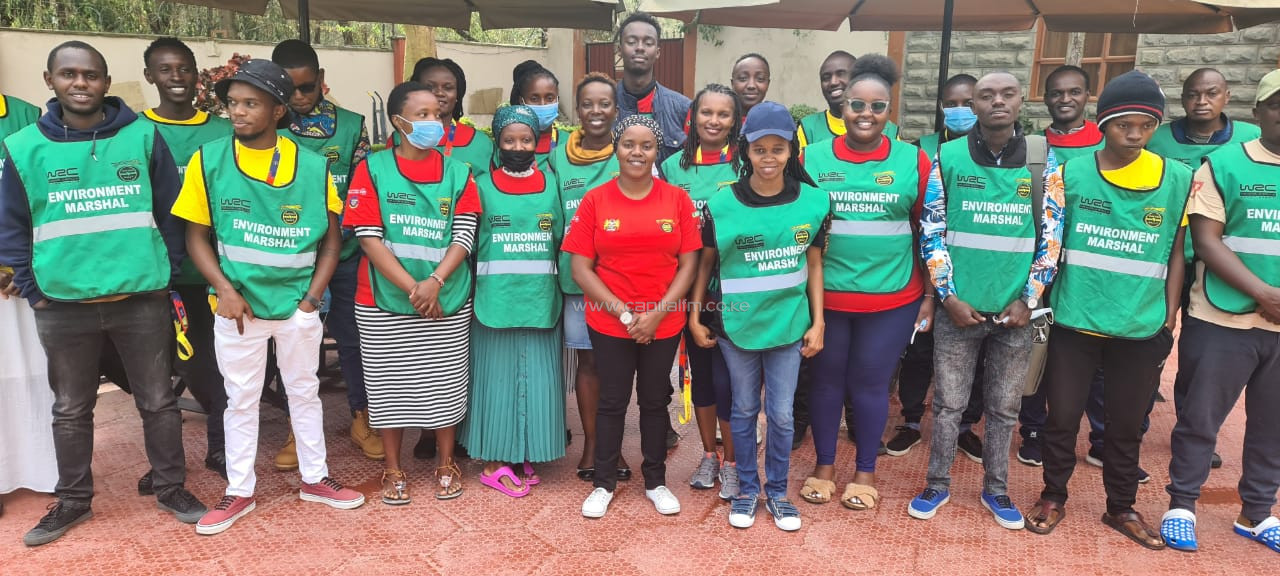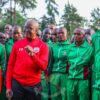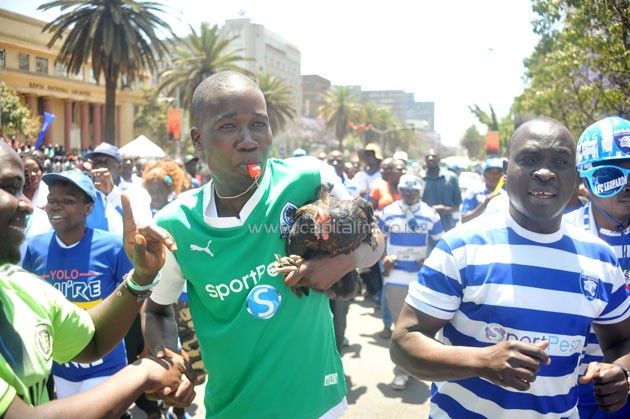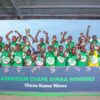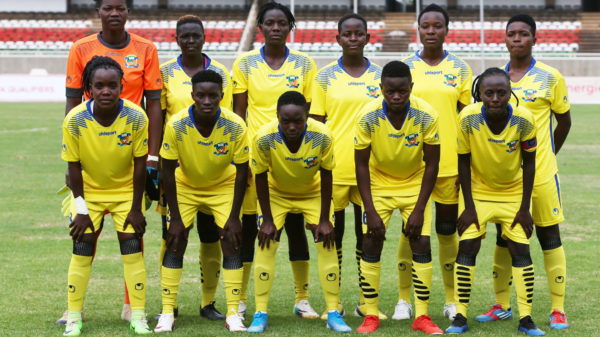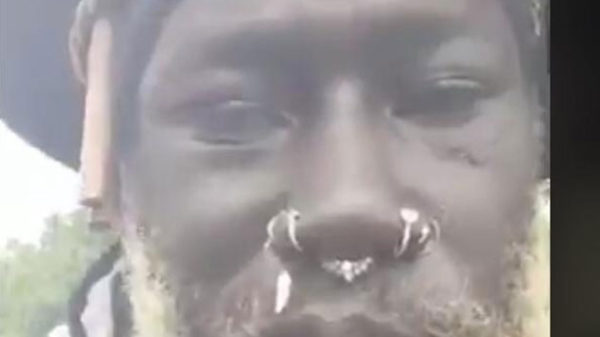NAIROBI, Kenya, Jul 12 – As the dust begins to settle in Naivasha and life begins to return to some semblance of normalcy, we look back at some of the activities that could easily go unnoticed to many.
The WRC Safari Rally drew a large number of rally fans came in from all parts of the country, the continent and the world, and with them came all sorts of unwanted waste like empty beer cans, plastic bottles, biological waste and much more.
For those with a keen eye, you would have noticed a group of people who were walking around with trash bags.
They swept through crowds, picking up any foreign matter that could have been introduced by the visiting fans. They were part of the team that was being referred to as the “WRC Safari Rally Environmental Marshalls.”
We spotted a few smart Environmental Marshalls at Kedong Ranch on day two of the Rally who instead of sweeping through the section frequently, the job was to place garbage bags in clear and visible at selected areas where there were large number of fans and proceeded to engage them in a conversation about their waste disposal.
“This got them to dispose of any unwanted waste in the bags in the designated areas. The result was astonishing,” one of the Environmental Marshalls shared.
After the rally, some of the fans cleaned the area they were in, by using their own carry bags to store the trash and put it all in one area ready for collection by the Environmental crews.
We decided to follow the Environmental crew and find out exactly what they did with this trash to ensure that they do not move it to another area where it will become a nuisance to someone else.
For this we caught up with Peris Njoroge, WRC Chief Environmental Officer and John Gitonga, the Assistant Environmental Officer who took us through their elaborate plan to ensure that all the waste from ‘Black Water (Waste from the toilets) to the ‘Grey Water’ from the mobile kitchens and the general waste from the different stages of the WRC Safari Rally was collected and well-disposed off.
Our idea was to follow the entire process and ensure that the WRC Environmental team followed through their promise to leave the environment in Naivasha and Nakuru better than we found it.
To do this, Capital Sports travelled to Naivasha and went through the different sections, speaking to the various stakeholders from the guards at the gate of the ranches, the owners and management of the ranches all the way to shop owners, business owners and the residents of Naivasha.
We started with the furthest point which was Soysambu and work our way back towards Naivasha.
Soysambu got the highest number of Rally fans during the five-day event. We took a walk through the designated spectator areas and drove around the vast 48,000 acre park, with over 12,000 animals; 130 being beautiful giraffes.
It was interesting to note that three quarter of Lake Elementaita is found within the vast Soysambu Ranch.
We went on to seek the indulgence of the Soysambu Management to find out the waste management process before, during and after the event.
For anyone who would have seen the large crowds that came to witness the return of the WRC Safari Rally after 19 years, you would not expect the place to be as clean as we found it.
A small herd of Zebra and Warthogs were grazing on the very spot some of the tents were constructed on. We went on to have a lengthy conversation, and found out that the popular conservancy has seen the likes of Theodore Roosevelt, Winston Churchill and Jomo Kenyatta.
The ranch also doubles up as a cattle breading and rearing site where the Borana cows are sold for their tasty beef that finds its way back to butcheries and plates across the country.
Elizabeth Monica Njeri, the Administration Manager and Tourism Officer at Soysambu Ranch was categorical, that they have never been happier with the WRC Secretariat with the way the event was held in the ranch and the waste management.
“The Rally marketed us well and they had an elaborate plan to clean up after the spectators and the event itself;” said Njeri.
Unknown to many, is that there is a plan in place to plant a number of trees to increase the current tree cover in the conservancy.
“The seedlings will be watered and maintained by the crew and management of the Soysambu ranch. At the end of the six-year partnership with the WRC Secretariat; Soysambu just like many of the other conservancies will benefit immensely from hosting the WRC Safari Rally,” Njeri told Capital Sports.
As we drove around, we could not help but notice the beautiful flora and fauna. Our drive took us from Soysambu into the Elementaita Stage and through the wildlife corridor and into the ‘Sleeping Warrior’.
One would hardly tell there was an event of the magnitude of the WRC Safari Rally. I got lost in my thoughts watching the Zebra grazing, the Giraffe gracefully walk across the lash Kenyan Savanah, the baboons chewing on the young shoots around the river.
The sheer beauty of this land makes it worth protecting as these are some of the few areas that we can still visit to be part of nature at its very best.
We moved on to Kedong and Hells Gate; that hosted the ‘Power Stage’ of the Safari Rally. This was the grand finale that carried a whopping six points that the WRC drivers ‘so verily needed’ to win the championship.
Albeit the fact that Kedong is dry, the wind blowing across the dusty track told a different story from what we left. The Environmental Marshalls outdid themselves as they collected all the trash in not just the spectator areas but all through the Conservancy.
Hells Gate was open and back in action as guests particularly came to see the variety of birds that call Hells Gate home.
Fischer’s Tower and some of the cliffs around Hells Gate provided an interesting challenge to those who attempted to scale the rock face all the amazement of the Baboons that call the area home.
Our journey took us to an iron sheet shed at the KWS Training Institute (KWSTI) in Naivasha that double up as the sorting zone. The area was managed by three service providers who had been sub-contracted to sort and manage the entire waste disposal process.
KWSTI Principal Dr. Patrick Omondi expressed satisfaction at how litter and waste was handled through not just the service park but the 18 stages that formed the WRC Safari Rally.
The sorting area allowed the crew to separate the glass, empty cans, plastic, organic waste and what would be termed bio-hazard waste which included used masks, rubber gloves, used spare parts and much more.
“The waste was collected from Naivasha and transported by road to Nairobi where the sub-contractors took their respective waste for recycling. The process is so well documented that you can trace the vehicle that picked the plastic waste from Naivasha to Nairobi or even trace the organic waste that formed 70% of the total waste all the way from the different stages to the compost pit,” Omondi explained.
Achtel Cleaning Solutions, for instance was contracted to do the general cleaning during the four-day event. They in turn sub-contracted Boredo Supplies Limited to take care of the solid waste, medical and hazardous waste along with the segregation of the same. Kamusie handled the exhaust water collection and disposal.
The plastic waste has already been transferred to handlers who will recycle it into fencing poles and PVC pipes. Wastepaper will be converted into cartons and boxes and other paper materials by Kamongo Waste Paper.
The Polythene bags will be recycled and converted into various plastic based materials by G&N Sons Polythene.
Organic waste will decompose and will be used as mulch or fertilizer in gardens while Medical waste and any contaminated material was incinerated at ‘Envirosafe;’ a National Environment Management Agency (NEMA) licensed agency.
All the agencies above have met the foresaid requirements and approvals and are listed and licensed by NEMA.
According to the WRC Safari Rally Waste Management Report for the 2021 event, 50,000 liters of liquid waste was collected during the event, 155kgs of Bio-Hazardous waste, 1,450kg of waste paper, 1,645 of plastic bottles, 1,115 of cans, 475 kg of polythene waste and 9,465kg of organic waste.
All this solid and hazardous waste was transported to Nairobi for processing as Naivasha currently does not have the capacity to deal with the waste as directed by the FIA. The liquid waste was properly disposed at the Naivasha Water and Sanitation Company Limited.
“Everything has been done in line with the FIA Environmental sustainability Framework and Guidelines. We are implementing a circular practice in our Waste management guided by the ‘Zero Waste to landfill’ philosophy. Nothing is left in the host areas unless really necessary and everything that can be recycled is recycled,” the Head of the Environmental team at WRC Safari Rally explained
“We have taken it a step forward by improving the areas the Safari Rally has passed through with our team of experts and engineers grading the roads, compacting the areas that needed to be compacted, growing trees in areas that needed extra tree cover. We got most of the WRC Rally drivers and crew to plant trees before the Rally and have a team that is working around the clock to water and ensure that they are not eaten or damaged by the wildlife in the KWS Training institute in Naivasha,” she added as she pointed out that more than 1,000 indigenous trees have been planted.
The Environment and Forestry PS Chris Kiptoo appealed for a complete paradigm shift in waste management systems to a more sustainable in creating a clean, safe and healthy environment.
“The 2021 WRC Safari Rally event could be a pace-setter in this quest as they were able to implement the sustainable circular system to manage the waste that was generated during the event,” he observed.
All in all; the WRC Safari Rally was a grand event with a lot of learning points for all. If the waste management system introduced is anything to go by, the WRC Safari Rally organizers have something to brag about away from the main event.
While we understand the number of fans who came through was overwhelming and managing them was an uphill task, we still appreciate the fact that despite everything, they were well behaved and did their part in the waste management.
Gitonga told the Capital FM Sports that the Environmental team will work throughout the year to ensure that Kenya is ready for the WRC Safari Rally in 2022.
“We are working on an ambitious deadline, that will see us plant 19 million trees and uplifted the ecosystem ahead of 2022 and 2023 event,” he stated.
More details on the WRC Safari Rally Greening project and the environmental projects can be found on the Safari Rally Website www.safarirally.co.ke.
For now, we have been advised to keep checking the Safari Rally Social media handles to find out about the next tree planting and environmental clean-up being hosted by the WRC Safari Rally Organizers

